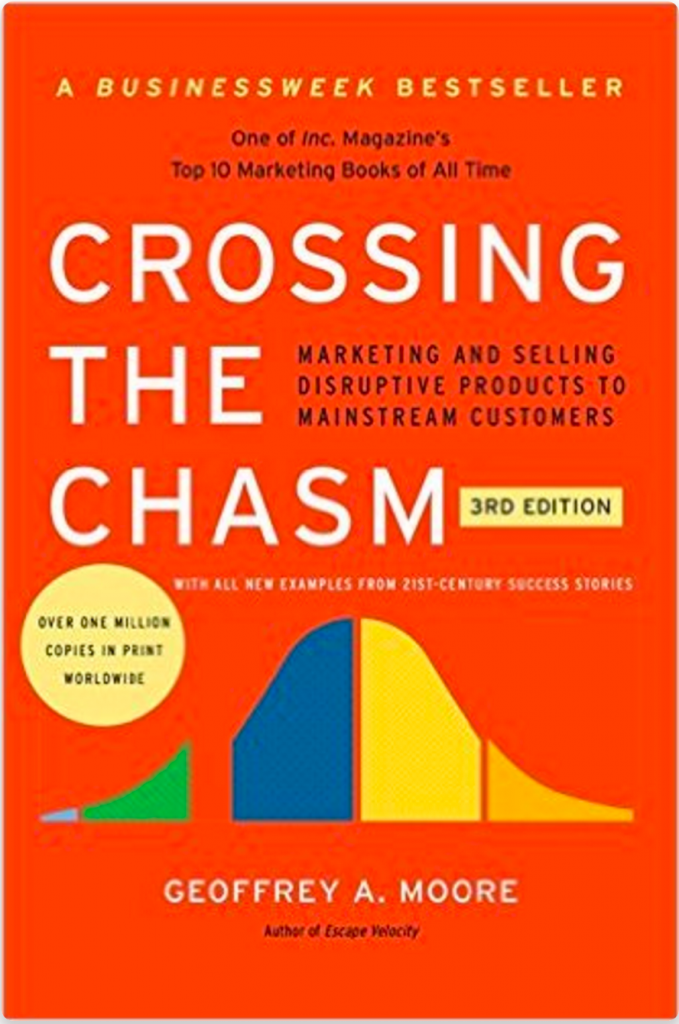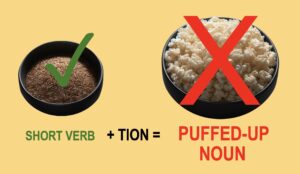
Crossing the chasm with effective white papers
This is a tale of two white papers, and the companies that planned them.
It shows how an effective marketing strategy can help you to create an effective white paper.
And it shows how an ineffective marketing strategy can hinder your best efforts to create a good white paper.
Along the way, we’ll review a few of the fundamental ideas in the book Crossing the Chasm by Geoffrey Moore.
This must-read marketing classic started with two perplexing questions:
- Why do some tech companies move from a few visionary customers to mainstream success?
- And why do others fail? Even after they pour millions of dollars into marketing?
These are great questions. And Moore’s answers have stood the test of time through three editions.
In fact, his book has been called “the bible for bringing cutting-edge products to larger markets.”
As you likely know, the “chasm” stands between the early adopters willing to take risks, and the early mainstream buyers who want to play it safe.
Let’s look at two recent client experiences that highlight some of Moore’s vital advice, drawn from his decades of experience in Silicon Valley.
Client #1: Good strategy to cross the chasm
Client #1 is a startup software firm with a cashless app for paying employees. They issue prepaid credit cards so managers can transfer funds to employees.
My client gets paid out of the merchant fees whenever an employee uses their prepaid card.
Client #1 could likely save time and money for many different types of businesses.
But they wisely targeted a specific niche: chain restaurants with 500+ employees who expect to get paid for their tips after every shift.

Since 90% of restaurant-goers pay with plastic, having cash on hand to pay out tips is a major headache.
Restaurants end up paying thousands of dollars for armored cars to drop off cash. And managers waste hours doling out small amounts of cash to employees.
Client #1’s smart strategy aligns perfectly with the advice in Crossing the Chasm: Target a specific vertical market with a total solution that meets all their needs.
An easy white paper to write
Client #1 drilled down deeper to focus on one specific problem of their chosen sector: tip management.
And they hired restauranteurs-turned-consultants who know the problems of this niche inside-out.
Because the marketing strategy was so smart, that white paper was relatively simple to research and straightforward to write.
We wrote a problem/solution white paper focused on the problem of tip management in an increasingly cashless world.
The goal was to generate leads.
With such a well-targeted niche, we could speak to this specific market in their own jargon.
And the subject matter experts (SMEs) who regularly talk to people about this problem helped us add some telling details:
—The waiter who knocks on the back door asking for his $17 in tips from the previous shift
—The manager who must tell everyone the next cash drop isn’t for two days, so they’ll just have to wait for their tips
—The bartender who uses the tips on her prepaid credit card to get a taxi home after the bar shuts at 3:00 am
Consider everything we had to work with from client #1:
- A specific vertical market
- A specific size of business
- A serious pain point in their target’s operations
- Good SMEs who gave us personas and jargon
Future plans: other problems, niches
Client #1 identified six more pain points to work on.
And after client #1 succeeds in their first niche, they can easily move into some nearby niches: smaller restaurant chains, then bar chains, then smaller bars.
Notice how success in each niche will help prove the system’s effectiveness to the next?
This fits the further advice from Crossing the Chasm: Move from one niche to a nearby target in logical succession.
We’re pretty sure this client will gain a lot of traction and some solid business success.
Client #2: Poor strategy to expand
Client #2 is an established software firm that makes software for surveys and course evaluations. It has achieved tremendous success in colleges and universities around the world.
To expand, they wanted to bring their holistic model of student feedback to the business world. So they targeted corporate training: a horizontal market worth billions of dollars that crosses every vertical niche.
But this runs counter to the advice in Crossing the Chasm. It’s too ambitious and too unfocused, the author would say.
You want to help with corporate training for who, exactly?

Our project was to repurpose an existing white paper aimed at colleges for this vast new audience. But that proved to be very difficult.
All the client’s new research on corporate training tended to be 10,000-foot views of the whole economy.
While we discovered some interesting material on engagement, motivating Millenials, and today’s ecosystems for business success, pulling all this together into a persuasive white paper was not easy.
Consider what we had to work with from client #2:
- A vast horizontal market
- No specified size of business
- No identified pain point in the prospect’s operations
- No SMEs who work in corporate training
- No personas to address
- No industry-specific jargon
- No day-in-the-life scenarios
We were basically recommending a theoretical framework to solve a thousand different problems.
It’s no wonder that we struggled with that paper.
Neither we nor our client was especially pleased with it.
And when it was eventually published, that white paper sank like a stone, creating little interest or traction.
A wiser strategy
It would have been much wiser to pick corporate training for a specific niche. Perhaps banking, renewable energy, or even restaurants.
And then to drill down even further, to focus on something like corporate training for bank tellers or training for windpower turbine installers.
Or perhaps to address some slice of the total audience such as promising executives being groomed for advancement who need training in “executive presence.”
(In fact, we just helped with a white paper aimed at that space.)
[Tweet “Work from a plan; not a dream.”]
Work from a plan, not a dream
You might say that client #1 started with a plan, while client #2 started with a dream.
While client #1’s plan was simple to implement with a white paper, client #2’s dream was not.
That’s why I insist that every white paper we create here at That White Paper Guy starts with a plan.
And the first order of business during that planning process is to brainstorm everything we know about the audience.
We get as specific as we can, right down to their gender, job title, experience, and what they worry about most.
A white paper based on a sensible business strategy will generate better results than one based on a dream.
And I think Geoffrey Moore would agree with that.
Need help planning your next white paper? Click here…
Have you had a superstar client who knew how to focus on who they wanted to target? Tell us your story in our comments below.




This article so clearly shows the importance of creating a detailed audience profile in order to have a successful writing product.
Thanks Gordon!
So glad you enjoyed the article Denise. I was the writer on the Client #1 project and it was one of the most enjoyable projects I’ve done because they were so well-focused and the SME had such specific examples to share.